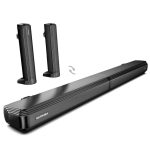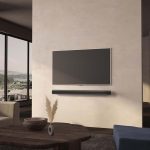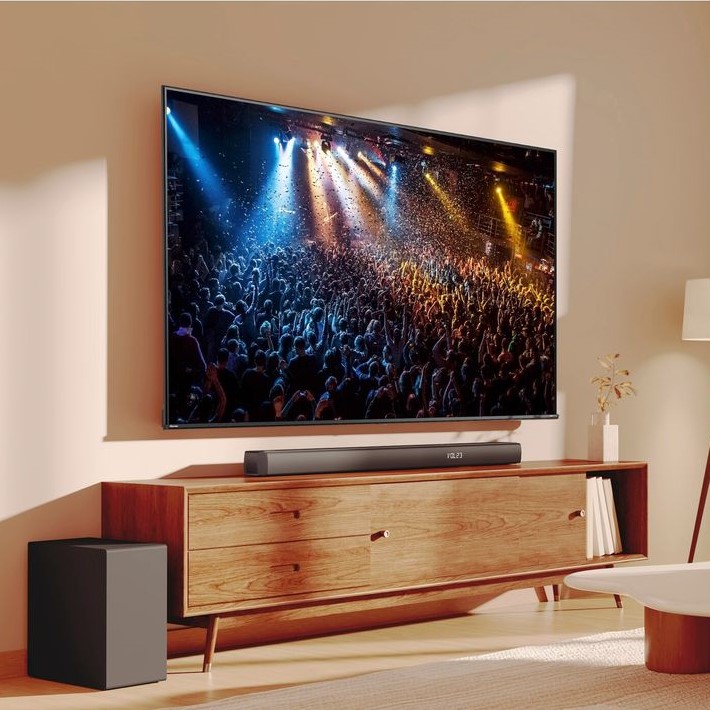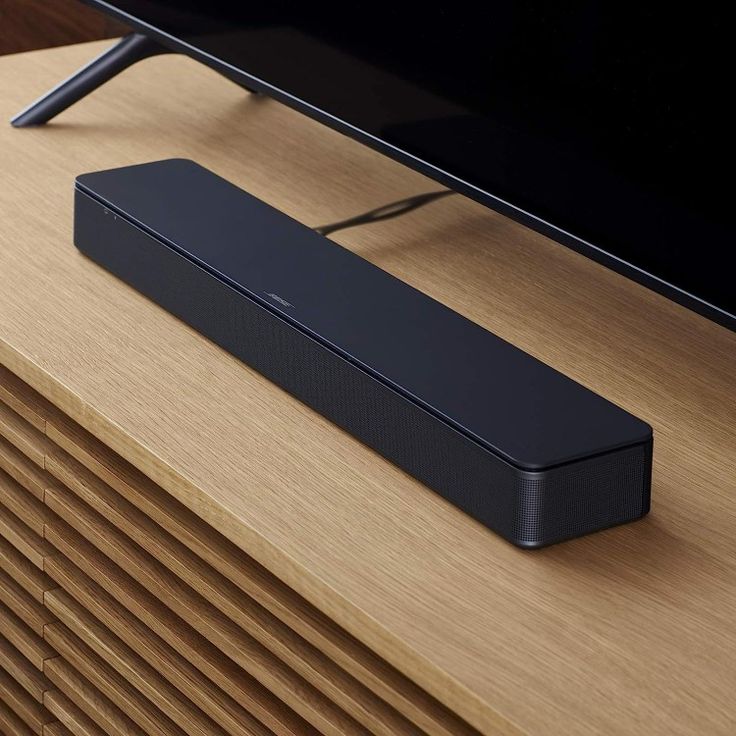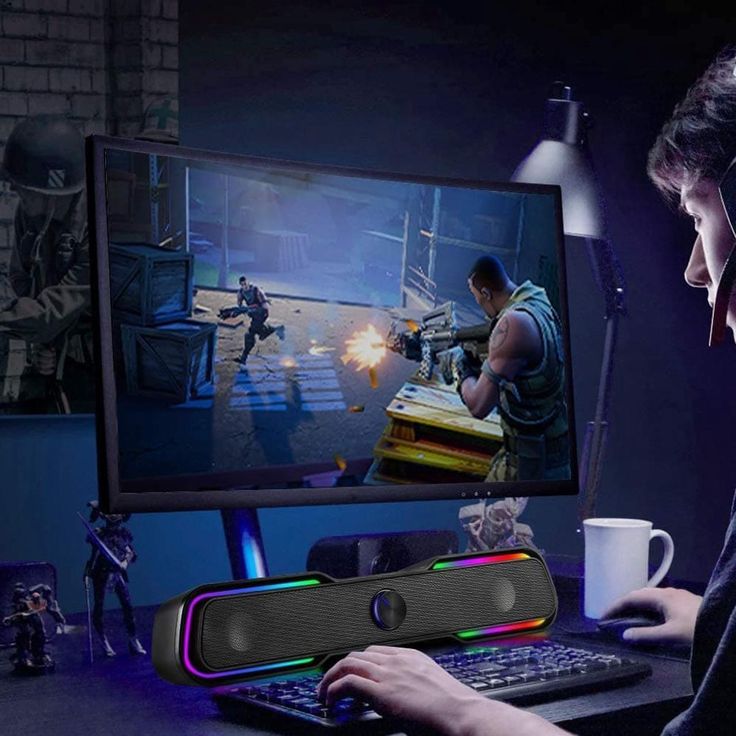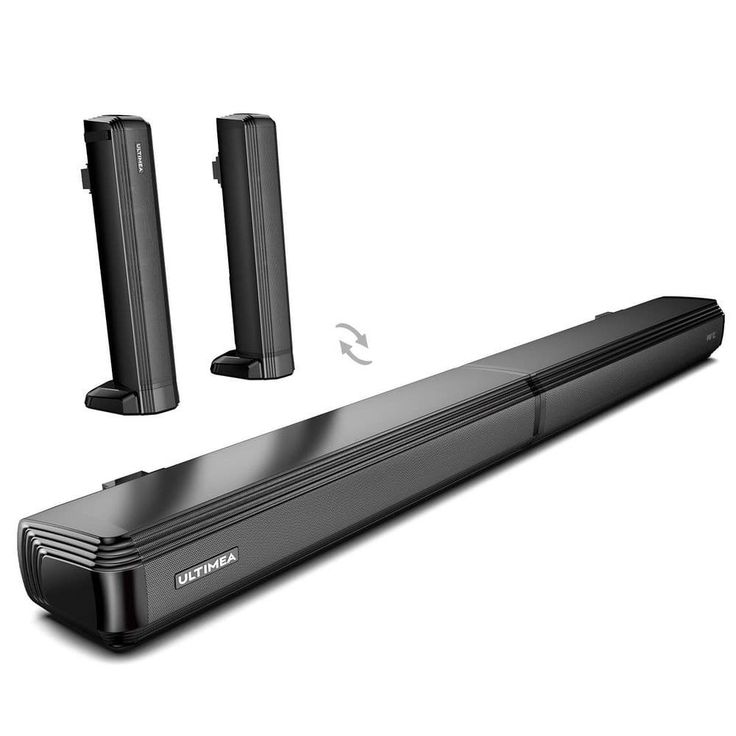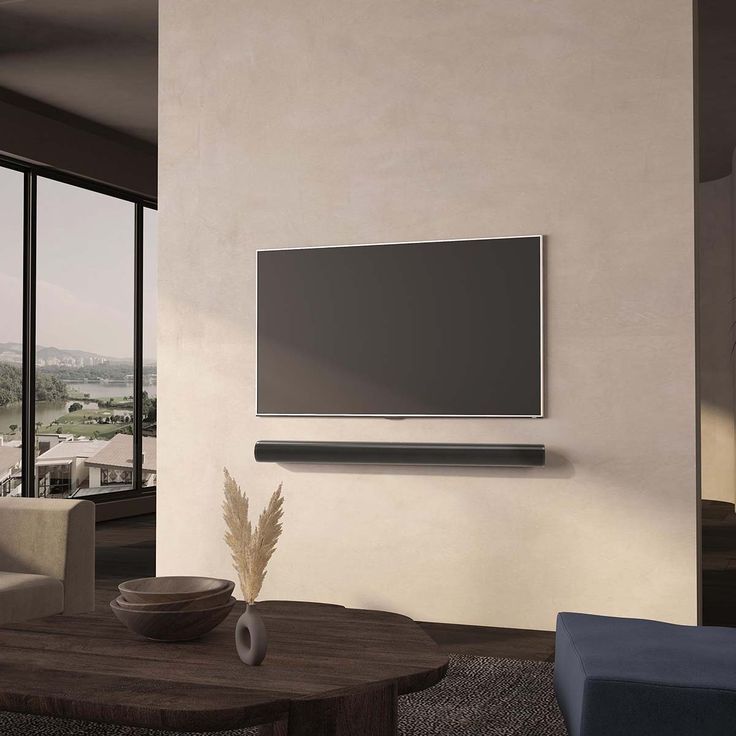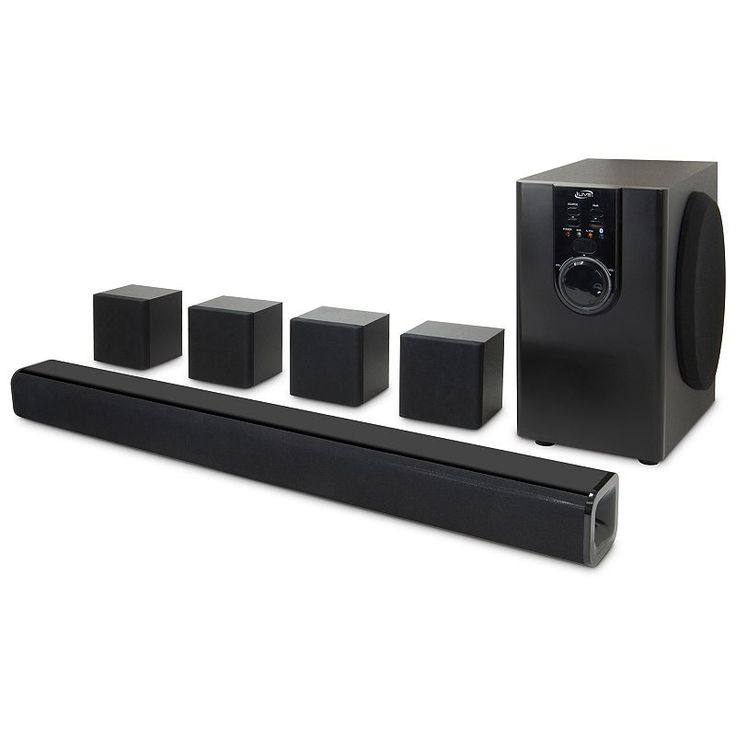Why Choose a Soundbar for Your TV?
Soundbars are an ideal solution to improve your TV’s audio performance. They provide better sound clarity than built-in TV speakers. Choosing the best soundbar for TV ensures a more immersive watching experience.
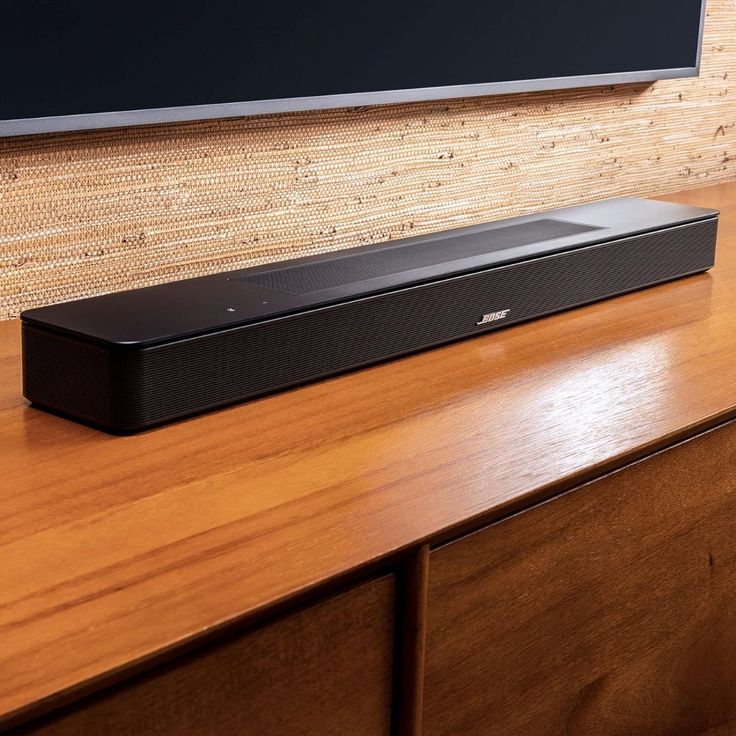
Advantages Over Built-in TV Speakers
TV speakers often lack power and depth, resulting in mediocre audio quality. Soundbars are designed to deliver superior sound with richer details and higher volume levels. They also reduce dialogue distortion, so conversations in movies and shows are easier to follow. Compact design means they fit neatly into your home setup while offering improved acoustics. With advanced technologies, soundbars produce vibrant and lifelike audio that TV speakers can’t achieve.
Enhancing Your Entertainment Experience
A soundbar transforms ordinary TV audio into a cinematic experience. Whether you’re streaming movies, watching sports, or playing video games, soundbars provide dynamic soundscapes that elevate your enjoyment. Many soundbars come with surround sound features for a theater-like setup. Music lovers appreciate their ability to deliver studio-quality sound. A well-chosen soundbar enhances overall entertainment by combining convenience, style, and exceptional audio quality.
Key Features to Look for in a Soundbar
When choosing the best soundbar for TV, focusing on key features is essential. These features ensure a superior audio experience and compatibility with your setup.
Sound Quality and Audio Channels
Sound quality is the most critical feature of any soundbar. Look for high-quality audio and well-balanced sound settings. Many soundbars come with multiple audio channels, such as 2.1 or 5.1 systems. These setups provide surround sound effects for a more immersive experience. Detailed audio ensures clear dialogue and vibrant soundscapes, enhancing every aspect of your entertainment.
Connectivity Options: Bluetooth, HDMI, Optical
Good connectivity is crucial for seamless device integration. Key connectivity options include Bluetooth, HDMI ARC, and optical inputs. Bluetooth enables wireless connections to your TV, phone, or tablet. HDMI ARC provides better sound transfer and easy integration with your TV remote. Optical inputs ensure high-quality audio streaming from TVs, gaming consoles, and other devices. Ensure your soundbar supports multiple connection methods for flexibility.
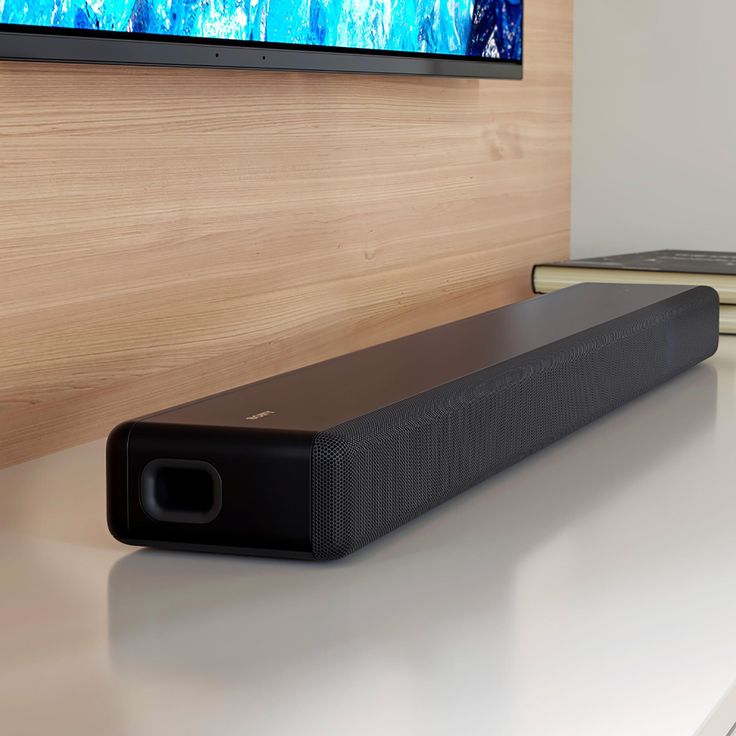
Size and Compatibility with Your TV
Choose a soundbar that complements your TV size and design. Large soundbars suit larger TVs, while compact ones fit smaller screens. Ensure the soundbar does not block sensors or TV controls. Compatibility is essential for hassle-free installation. Check if the soundbar matches your TV’s mounting options and setup requirements.
Smart Features and Voice Assistants
Modern soundbars often come with smart features for added convenience. Look for compatibility with voice assistants like Alexa or Google Assistant. Smart features include app control and integration with smart home ecosystems. These features allow voice commands to adjust volume, change tracks, or play content, simplifying daily use.
Build Quality and Aesthetics
Build quality ensures durability and long-term use of your soundbar. Opt for models made of sturdy materials with a premium finish. Aesthetic design enhances the look of your home entertainment setup. Sleek and stylish soundbars blend easily with modern interiors, adding to overall visual appeal. Prioritize a soundbar that combines top-notch build quality with an attractive design.
Types of Soundbars to Consider
When choosing the best soundbar for TV, the type of soundbar you select matters. Different designs cater to various audio preferences and room setups. Below, we explore the four main types of soundbars.
Traditional Soundbars
Traditional soundbars are slim, standalone units that enhance your TV’s built-in audio. They are easy to set up and fit snugly below your TV. These soundbars focus on improving overall clarity and detail in sound. They are ideal for casual viewers who want better sound without extensive setups. Traditional soundbars often include features like Bluetooth and HDMI connectivity for added convenience.
Soundbars with Built-in Subwoofers
Soundbars with built-in subwoofers combine powerful bass and compact design. These models eliminate the need for a separate subwoofer. They are perfect for smaller spaces where adding extra speakers isn’t practical. Despite their all-in-one design, they deliver impactful bass for movies, games, and music. Choose these options if you prioritize simplicity without compromising audio depth.
Soundbar and Subwoofer Combos
Soundbar and subwoofer combos provide richer and more dynamic soundscapes. These systems include a separate subwoofer for deep bass performance. The combination enhances the cinematic quality of action movies and immersive gaming experiences. They are suitable for medium to large rooms and offer flexibility in placement. This setup ensures a balanced mix of treble and bass for high-quality audio.
Premium Soundbars with Dolby Atmos
Premium soundbars with Dolby Atmos deliver a true surround sound experience. They create 3D audio, making the sound appear to move around you. These soundbars are designed for audiophiles and home theater enthusiasts. Features include advanced drivers, voice assistants, and high-end materials. They are perfect for large living spaces or dedicated entertainment rooms. Investing in a Dolby Atmos soundbar guarantees unparalleled audio immersion.
Best Soundbar Brands in the Market
When selecting the best soundbar for TV, brand reputation is a key factor. Trusted brands ensure quality, innovation, and reliable customer support. Let’s explore the leading soundbar brands you should consider.
Bose
Bose is known for premium sound systems and exceptional build quality. Their soundbars deliver crisp audio with deep bass and clear dialogue. Many models feature advanced technologies, like ADAPTiQ, which optimizes sound based on room acoustics. Bose soundbars often include voice control options, such as Alexa or Google Assistant. They are perfect for users seeking high-performance and sleek designs.
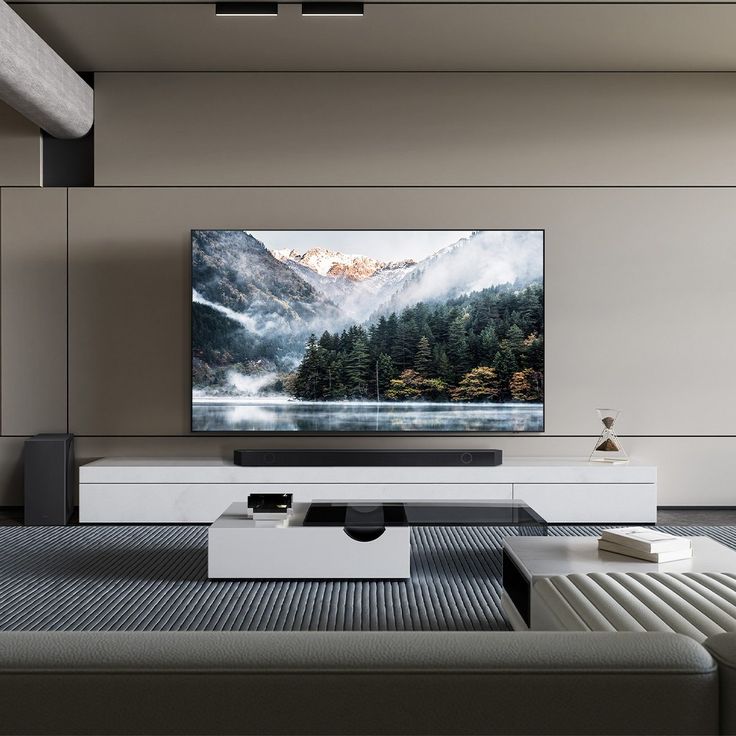
Sonos
Sonos is a popular choice for smart and wireless sound systems. Their soundbars offer multi-room audio integration and easy app control. They support streaming services like Spotify, enabling seamless music playback. Sonos soundbars also feature Dolby Atmos for an immersive experience. They are simple to set up and work well with voice assistants like Alexa. Choose Sonos for cutting-edge audio technology and versatility.
Samsung
Samsung offers soundbars that combine innovation and affordability. Known for their sleek designs, Samsung soundbars provide balanced audio with rich details. Many models include Dolby Atmos and DTS:X support for surround sound effects. Samsung soundbars often pair easily with Samsung TVs for added convenience. They cater to both budget-conscious buyers and those seeking premium features.
Sony
Sony is a leader in audio equipment, offering soundbars with exceptional performance. Their models are equipped with S-Force PRO Front Surround for realistic soundscapes. Many Sony soundbars include immersive features like Dolby Atmos and powerful bass-driven subwoofers. They are an excellent option for movies, gaming, and music playback. Sony’s durable construction ensures long-term reliability and consistent quality.
Vizio
Vizio soundbars are known for affordability without compromising on performance. They deliver impressive audio clarity and deep bass, making them ideal for small to medium rooms. Many Vizio models include wireless subwoofers and Bluetooth connectivity for added convenience. Their simple setup process appeals to users new to soundbar systems. Vizio offers great value, especially for those on a budget.
Tips for Installing and Setting Up Your Soundbar
A soundbar is only as good as its setup. Proper installation ensures optimal performance. Here are practical tips for placement, connection, and sound adjustment.
Placement for Optimal Sound
- Position Below or Above the Screen: Place the soundbar directly under or above your TV. Ensure it’s centered relative to the screen for balanced audio.
- Ear-Level Placement: Position the soundbar at ear level for clearer sound, especially dialogue.
- Avoid Obstacles: Ensure nothing blocks the soundbar. Obstructions can distort or muffle audio quality.
- Wall Mounting Option: Many soundbars support wall mounting. Use this setup for clean aesthetics, especially in confined spaces.
- Room Acoustics: Place the soundbar in an open area for even sound distribution. Avoid placing it in enclosed shelving.
Connecting to Your TV and Other Devices
- Use HDMI ARC: Connect the soundbar to your TV using an HDMI ARC cable. This ensures high-quality audio and easy control via your TV remote.
- Optical Cable Option: If HDMI is unavailable, use an optical cable. It also delivers quality sound.
- Enable Bluetooth Connectivity: For added convenience, connect TVs, phones, or tablets wirelessly via Bluetooth.
- Test and Adjust Inputs: Ensure all connections are secure. Test each source (TV, gaming console, etc.) to confirm sound output.
- Check TV Settings: Go to your TV’s audio settings. Select the soundbar as the default external speaker.
Adjusting Sound Settings for Performance
- Customize Equalizer (EQ) Settings: Use the soundbar’s EQ to tweak bass, treble, and mids based on preferences.
- Enable Surround Sound Modes: If available, activate surround sound modes for movies or gaming.
- Dialogue Clarity Features: Turn on dialogue enhancement modes for clearer speech.
- Calibrate for Room Acoustics: Use your soundbar’s calibration tools to adjust sound based on room size and layout.
- Volume Balance: Set volume levels so that highs and lows are evenly balanced.
Proper placement, connection, and sound customization optimize your soundbar’s performance. This ensures a seamless entertainment experience.
Budget Considerations for Soundbars
When choosing the best soundbar for TV, budget plays an essential role. Soundbars vary widely in price, catering to different user needs. Understanding the options within your budget helps you make an informed decision.
Affordable Soundbars for Basic Use
Affordable soundbars are perfect for upgrading from TV speakers without overspending. These models offer decent sound improvement, enhancing clarity and volume. They typically come with basic features like Bluetooth connectivity and simple remote controls. Affordable soundbars often lack advanced technologies like Dolby Atmos or dedicated subwoofers. They are ideal for smaller rooms or casual viewing experiences. Brands like Vizio and TCL provide great choices for budget-conscious buyers who want better sound quality.
Mid-Range Options for Better Quality
Mid-range soundbars balance quality and price, making them a popular choice for many. These soundbars deliver richer audio with improved bass and surround sound capabilities. Many mid-range models include separate subwoofers for enhanced low-frequency performance. Features like HDMI ARC, optical inputs, and voice assistant support are common. They cater to users who want an immersive experience without splurging on premium models. Samsung and Sonos offer excellent mid-range soundbars with versatile features and reliable performance.
High-End Models for Premium Audio
High-end soundbars provide exceptional audio quality for a true cinematic experience. These models include advanced technologies like Dolby Atmos and DTS:X for immersive 3D sound. Premium soundbars often feature multiple audio channels and superior build quality. Integration with smart home systems and voice assistants adds to their convenience. They are perfect for audiophiles and home theater enthusiasts seeking the best experience. Brands like Bose and Sony lead the market in high-end soundbar options, combining innovation with luxury.
Frequently Asked Questions About Soundbars
Can I Use a Soundbar with Any TV?
You can use a soundbar with almost any TV. Most soundbars offer multiple connectivity options like HDMI ARC, optical cable, or Bluetooth. Check if your TV supports these connection methods. Ensure the soundbar fits well with your TV size and setup. Older TVs may require adapters for proper connectivity. Modern TVs usually work seamlessly with soundbars.
Do I Need a Subwoofer with My Soundbar?
A subwoofer enhances bass for deeper, richer sound quality. However, they aren’t always necessary. Some soundbars come with built-in subwoofers for compact setups. Choose a standalone subwoofer if you want powerful bass for movies or games. Smaller rooms or casual watching may not need extra bass. Evaluate your audio preferences and space before deciding.
How Do Soundbars Compare to Home Theater Systems?
Soundbars are simpler and more compact than home theater systems. They provide improved audio without the complexity of multiple speakers. Home theater setups offer surround sound with dedicated speakers and subwoofers. Soundbars are ideal for small spaces or easier installation. Home theaters are better for large rooms and full cinematic audio. Consider your room size and audio needs when selecting between the two.
Conclusion
The best soundbar for TV is more than just an audio upgrade—it’s a game-changer for your home entertainment. Whether you’re watching movies, playing games, or streaming shows, a quality soundbar enhances every moment with clearer, richer sound.
From improved audio quality to smart features and wireless connectivity, today’s soundbars offer something for everyone. With the right model, you can enjoy an immersive experience that brings your favorite content to life.
As we move into 2025, soundbar technology continues to advance, offering even more options and innovations. Whether you’re a tech enthusiast or a casual viewer, there’s a soundbar that fits your needs and budget.
So why wait? Explore the latest models and find the best soundbar for TV that will elevate your home entertainment experience. With the right choice, you’ll enjoy every movie, game, and show with crystal-clear sound and unmatched convenience.




